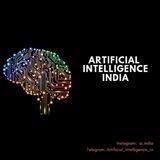AI Engineering has levels to it:
– Level 1: Using AI
Start by mastering the fundamentals:
-- Prompt engineering (zero-shot, few-shot, chain-of-thought)
-- Calling APIs (OpenAI, Anthropic, Cohere, Hugging Face)
-- Understanding tokens, context windows, and parameters (temperature, top-p)
With just these basics, you can already solve real problems.
– Level 2: Integrating AI
Move from using AI to building with it:
-- Retrieval Augmented Generation (RAG) with vector databases (Pinecone, FAISS, Weaviate, Milvus)
-- Embeddings and similarity search (cosine, Euclidean, dot product)
-- Caching and batching for cost and latency improvements
-- Agents and tool use (safe function calling, API orchestration)
This is the foundation of most modern AI products.
– Level 3: Engineering AI Systems
Level up from prototypes to production-ready systems:
-- Fine-tuning vs instruction-tuning vs RLHF (know when each applies)
-- Guardrails for safety and compliance (filters, validators, adversarial testing)
-- Multi-model architectures (LLMs + smaller specialized models)
-- Evaluation frameworks (BLEU, ROUGE, perplexity, win-rates, human evals)
Here’s where you shift from “it works” to “it works reliably.”
– Level 4: Optimizing AI at Scale
Finally, learn how to run AI systems efficiently and responsibly:
-- Distributed inference (vLLM, Ray Serve, Hugging Face TGI)
-- Managing context length and memory (chunking, summarization, attention strategies)
-- Balancing cost vs performance (open-source vs proprietary tradeoffs)
-- Privacy, compliance, and governance (PII redaction, SOC2, HIPAA, GDPR)
At this stage, you’re not just building AI—you’re designing systems that scale in the real world.

 Показать ещё
Показать ещё
